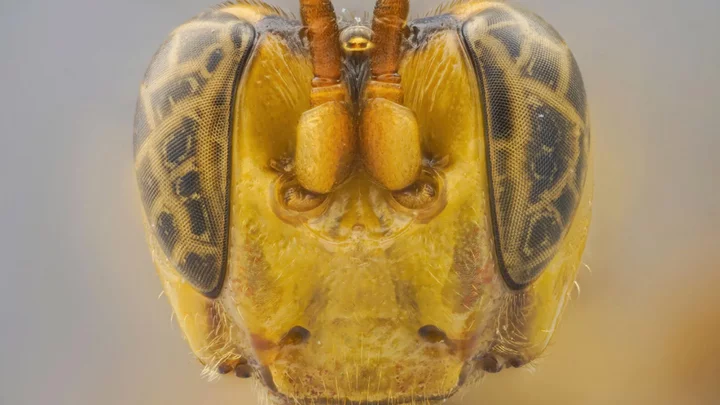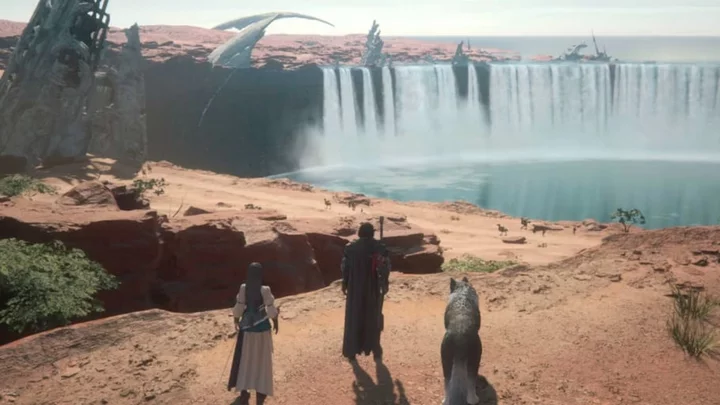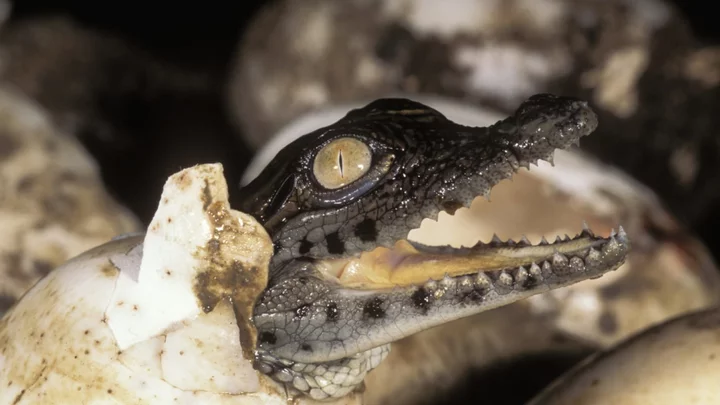
Starpower Elevates Thompson to Vice President
DALLAS--(BUSINESS WIRE)--Jul 31, 2023--
2023-07-31 23:17

Amazon Fire TV Omni (65-Inch) Review
Editors' Note: This is the most recent version of the 65-inch Amazon Fire TV Omni.
2023-06-23 00:27

A parasitic wasp with a giant head has been discovered and it's the stuff of nightmares
Scientists have unearthed a new species of wasp in the Amazon – and it's rather terrifying. The alien-looking parasitic creature came to light when a team at Utah State University were researching Allpahuayo-Mishana National Reserve in Peru. The wasp, known as Capitojoppa amazonica, has a giant almond-shaped head and is known to latch on to prey before sucking its blood and then eating it from the inside. It does so by laying eggs in its victims including caterpillars, beetles and spiders. The study’s lead author, biologist Brandon Claridge called the practice a "solitary endoparasitoid". "Once the host is located and mounted, the female will frantically stroke it with her antennae," Claridge told Live Science in an email. "If acceptable, the female will deposit a single egg inside the host by piercing it with her ovipositor (a tube-like, egg-laying organ)." He went on to explain that in some instances, "females will even stab the host with the ovipositor and feed without laying an egg as it helps with gaining nutrients for egg maturation." This isn't the first horrifying discovery, with researchers recently finding a new species of tarantula in Thailand that is characterised with illuminous blue legs. The spider is one of the rarest in the world, with Dr Narin Chomphuphuang explaining how it lurks in hollow trees. "The difficulty of catching an electric-blue tarantula lies in the need to climb a tree and lure it out of a complex of hollows," he explained. "During our expedition, we walked in the evening and at night during low tide, managing to collect only two of them." Sign up for our free Indy100 weekly newsletter Have your say in our news democracy. Click the upvote icon at the top of the page to help raise this article through the indy100 rankings.
2023-10-17 18:23

Mercedes-Benz picks Tesla's charging standard for N.America EVs from 2025
(Reuters) -German automaker Mercedes-Benz said on Friday its electric vehicles in North America will adopt the Tesla-developed charging technology from
2023-07-07 21:48

How to Pet Torgal in Final Fantasy XVI
Yes, you can pet the dog in Final Fantasy XVI . Here's how.
2023-06-27 04:59

TweetDeck is no longer free
The latest change to Elon Musk's X? TweetDeck — rebranded as XPro — is now
2023-08-16 17:52

U.S. Treasury details EV tax credit rebate rules
By David Shepardson WASHINGTON The U.S. Treasury Department on Friday issued new guidance on how a $7,500 electric
2023-10-07 00:19

What is Signal? The basics of the most secure messaging app.
The secure messaging app Signal has been around for years but, in 2021, it saw
2023-06-13 17:51

Scientists Marvel at the First ‘Virgin Birth’ Documented in a Crocodile
The baby croc was the product of a mother who has spent her entire life in captivity.
2023-06-22 21:58

Biggest African Bank Cites Energy Needs in Fossil Fuel Defense
Standard Bank Group Ltd., Africa’s biggest lender by assets, defended it’s investment in fossil-fuel projects, saying tthe continent’s
2023-05-09 13:28

Microsoft revised deal to buy Call of Duty maker Activision cleared by watchdog
Microsoft has been given approval to buy Call of Duty developer Activision, clearing the way for one of the biggest ever tech deals. The Competition and Markets Authority (CMA) said the Xbox owner could go ahead with the takeover after agreeing to buy Activision without cloud gaming rights. It puts an end to a half-year long battle between the watchdog and Microsoft, having moved to block the deal in April. But businesses and their advisors should be in no doubt that the tactics employed by Microsoft are no way to engage with the CMA Sarah Cardell, CMA's chief executive The new deal, which was initially worth 69 billion US dollars (£56.6 billion at the current exchange rate), will stop Microsoft from having a “stranglehold” over the UK cloud gaming market, the CMA said. The regulator said it would preserve competitive prices for gamers and make sure consumers get more choice. Assassin’s Creed video game maker Ubisoft is set to buy Activision’s cloud gaming rights instead. But the CMA criticised Microsoft for “dragging out” proceedings during its investigation into the merger. Sarah Cardell, the CMA’s chief executive, said: “With the sale of Activision’s cloud streaming rights to Ubisoft, we’ve made sure Microsoft can’t have a stranglehold over this important and rapidly developing market. “But businesses and their advisors should be in no doubt that the tactics employed by Microsoft are no way to engage with the CMA. “Microsoft had the chance to restructure during our initial investigation but instead continued to insist on a package of measures that we told them simply wouldn’t work. “Dragging out proceedings in this way only wastes time and money.” Brad Smith, the president of Microsoft, said the group is “grateful” for the decision to approve the acquisition which he believes will “benefit players and the gaming industry worldwide”. Additional reporting by agencies Read More Incels using TikTok to spread ‘hateful beliefs’, research suggests Duke and Duchess of Sussex call for overhaul of social media Google to trial AI in UK traffic light systems to reduce stop-and-go emissions Broadband customers face £150 hikes because of ‘outrageous’ rises – Which? Rise of AI chatbots ‘worrying’ after man urged to kill Queen, psychologist warns William hails ‘amazing’ eco-friendly start-up businesses
2023-10-13 15:28

Acer Chromebook Spin 513 (2023) Review
Acer has won more than its share of PCMag Editors' Choice awards for Chromebooks, with
2023-05-10 10:18
You Might Like...

Maui Fire’s Missing-Person List Falls to 388 After FBI Vetting

Meta faces renewed criticism over end-to-end encryption amid child safety fears

Diablo® IV Launches, Immediately Sets New Record as Blizzard Entertainment’s Fastest-Selling Game of All Time

Biden boosts spending request to help pay for disasters

COP’s Meat Map, Market Rally Faces Risks: Sunday Asia Briefing

Bonnierabbit: Extreme winds mess Twitch streamer's outdoor setup during live stream

Internet divided over Mark Zuckerberg's Instagram Threads app for sharing content and public conversations

How did Pokimane help Mizkif deal with 'stress' of being top Twitch streamer?
